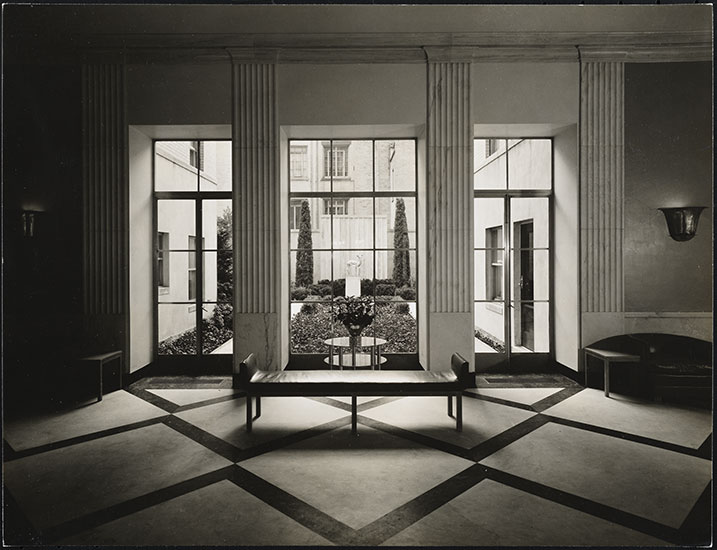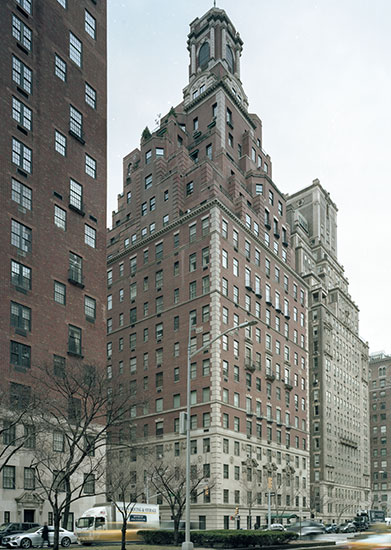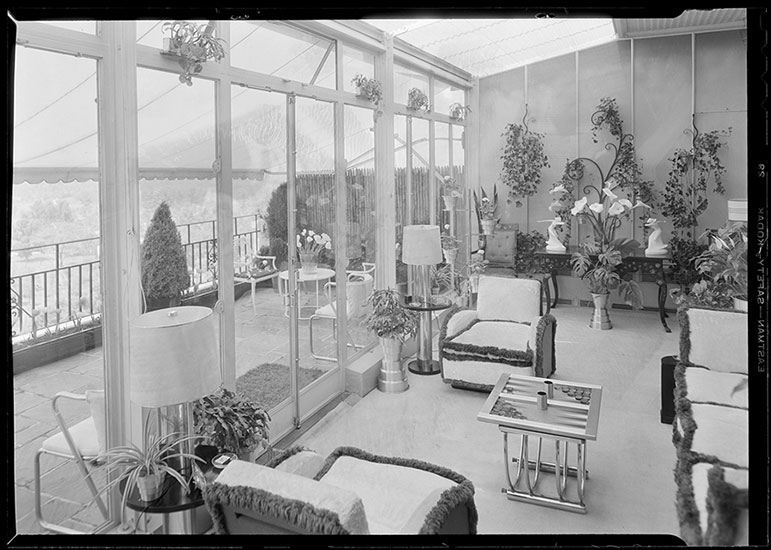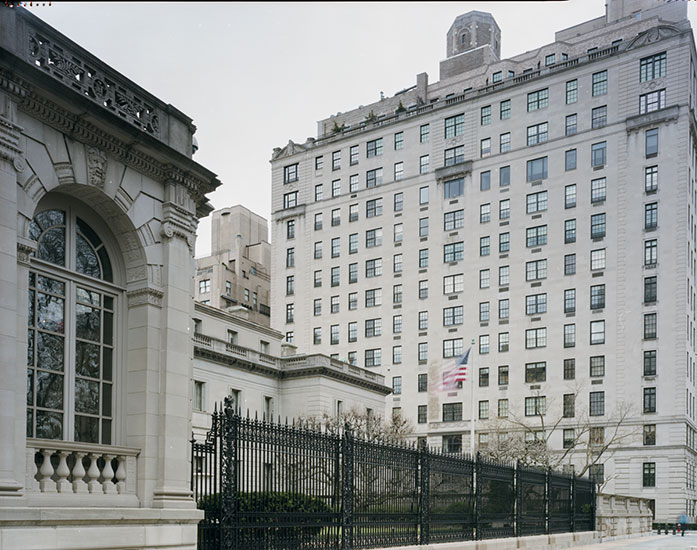Rosario Candela Show ‘Elegance in the Sky’ Opens in New York

770 and 778 Park Avenue, 2018.
Photo by Rob Stephenson, courtesy of the photographer

Lobby looking toward interior courtyard of 19 East 72nd Street.
Photo by Wurts Bros. Museum of the City of New York, Wurts Bros. Collection, gift of Richard Wurts

Jesse Isidor Straus library at 720 Park Avenue, 1934.
Photo by Samuel Gottscho. Museum of the City of New York, gift of Gottscho-Schleisner

778 Park Avenue, 2018.
Photo by Rob Stephenson, courtesy of the photographer

Elizabeth Arden's penthouse at 834 Fifth Avenue, looking north May 23, 1933.
Photo by Samuel Gottscho. Museum of the City of New York, gift of Gottscho-Schleisner

2 East 70th Street with the Frick Collection in the foreground, 2018.
Photo by Rob Stephenson, courtesy of the photographer






It’s a uniquely American irony that the template for early 20th century residential opulence was shaped largely by an undereducated immigrant—an Italian, at that—who arrived in America with a minimal grasp of English. By the standards of his time (and, depressingly, those of today), Rosario Candela would not be considered desirable. Born in Palermo in 1890, he emigrated to the U.S. around 1910. His unflagging drive, industriousness, and sheer talent allowed Candela to graduate from Columbia University’s architecture school in 1915, start his own firm five years later, and reshape urban living by creating some of the country’s most coveted real estate: Fifth Avenue maisonettes overlooking Central Park, elegant duplexes and triplexes in cooperative buildings on Park Avenue, some of the first apartment complexes on Sutton Place.
Elegance in the Sky: The Architecture of Rosario Candela is a compact one-room exhibit at the Museum of the City of New York, curated by Donald Albrecht and designed by Peter Pennoyer Architects, that takes viewers inside a handful of those residences. Images of a stately library at 720 Park Avenue, a sun-drenched penthouse terrace with expansive views at 834 Fifth Avenue, and a dome-ceiling dining room at 960 Fifth Avenue sit alongside exterior views of the buildings and floor plans of the units. In all, nearly a dozen projects from the late 1920s through the early 1930s are represented in the exhibition (Candela completed more than 70 buildings—and pivoted to a second career, after the Depression, as an accomplished cryptographer—before his death in 1953), alongside large photographs of other Candela apartments and a display of items including marketing materials and personal objects.
Candela’s apartments established a visual shorthand for affluence and clearly influenced the residential style and design of the daffy elite screwballing across movie screens during the Depression in films like My Man Godfrey (1936), Easy Living (1937), and Holiday (1938). But it’s the buildings themselves that cast a longer historic and aesthetic shadow. Besides expediting the end of the Upper East Side’s mansion era, they were wildly exuberant in their design, radiating creativity without breaking the context of the neighborhood and pointing toward Modernism and more recent modes of design.
The hulking 2 E. 70th Street, for instance, sits across from the Frick Collection and mirrors that smaller manse in its color and construction. 960 Fifth Avenue, described by the New York Times as “12 mansions built one on top of another,” is an architectural puzzlebox. (It’s expertly explored, from the inside out, in a video included in the exhibit.) And then there’s the 18-floor 778 Park Avenue, completed in 1931, which begins as a standard red-brick structure and becomes a remarkable, even abstract marriage of 20th century asymmetry and Old World styling—including a loggia, housing the ubiquitous rooftop water tank—as it begins to step back above the 12th floor.
Elegance in the Sky also includes a focus on the marketing behind Candela’s buildings, which, is interesting but secondary to the buildings themselves. Leaving the show, you immediately want to head south to give them a closer look (and maybe make nice with a tenant to go inside, too). The exhibit accomplishes a lot in a small space and—while Candela might be recognizable to professionals—serves as a wonderful primer on one of America’s most important, yet under-discussed, architects.
Elegance in the Sky runs through October 28 at the Museum of the City of New York on the Upper East Side of Manhattan.


Esto-SaharCostonHardy.jpg?height=200&t=1734972108&width=200)






